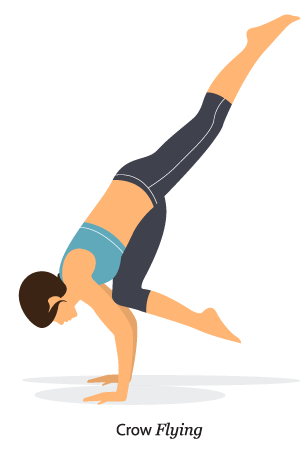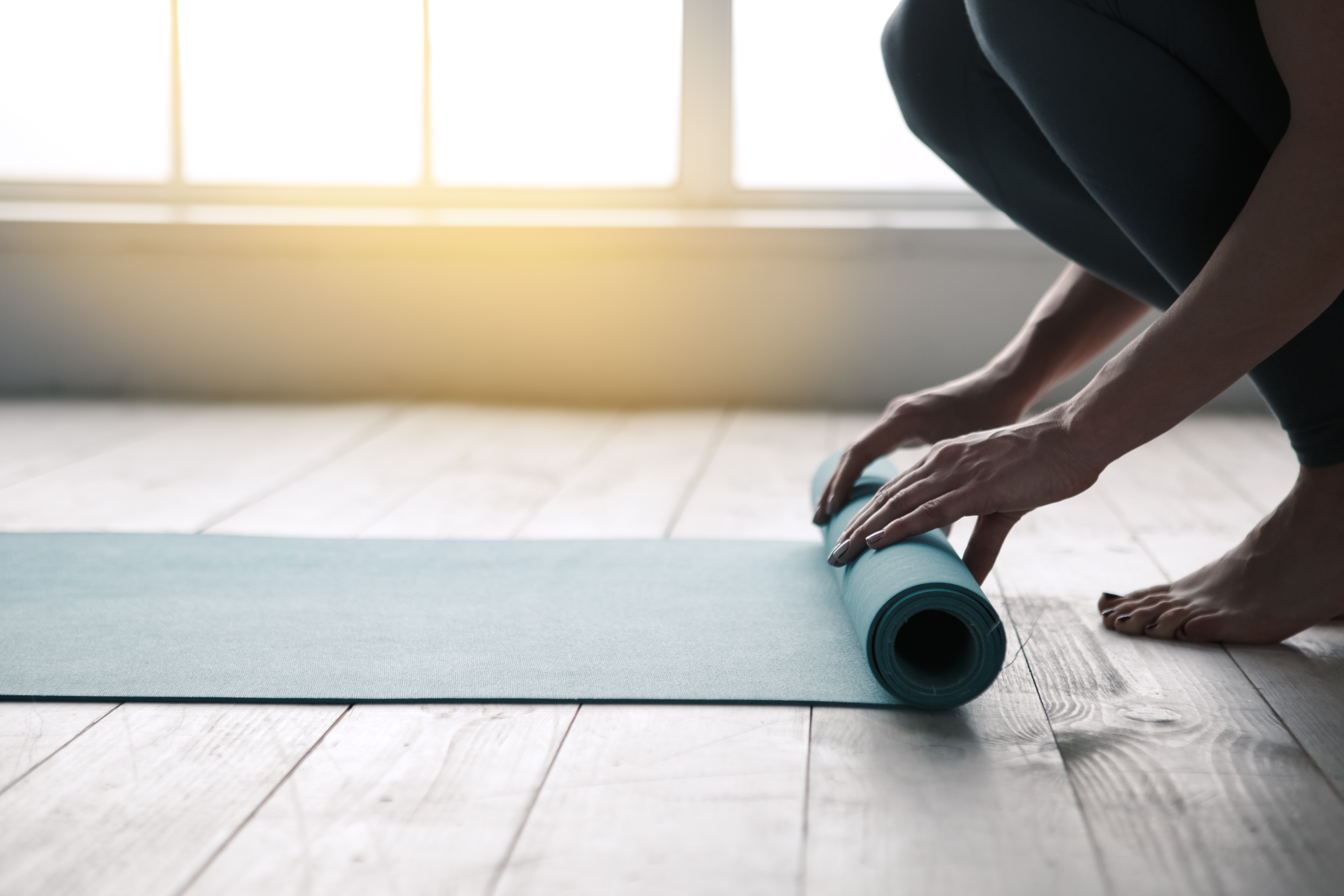Last Updated on April 24, 2024
Diabetes is really common. In fact, about 30.3 million Americans have it. Despite being common, however, a lot of people are still struggling to treat and prevent the condition. If you are one of those people, here’s the good news. According to research, yoga has the potential to be helpful in the management of diabetes, particularly type 2 diabetes. In case you’re wondering how, here are 5 ways yoga can help control your blood sugar.
1. It stimulates the pancreas
The pancreas is that long flattened gland that sits deep in your abdomen. It is a vital part of your body, particularly your digestive system. It produces enzymes that aid in the digestion of food and releases hormones that keep your blood sugar in check.
Most of the yoga postures for diabetes requires contractions and relaxation of the abdominal muscles. These movements stimulate the pancreas, encouraging an increase in oxygen and blood supply. The more nutrients and blood that reach your pancreatic cells, the more they are able to rejuvenate. As a result, your pancreas gets more efficient in producing and releasing insulin.
Take note: that you don’t have to work hard on yoga just to achieve those effects. If you are just starting out, do the routines gradually.
Don’t exert too much effort. Instead, focus on your breathing, stretching, and abdominal compressions. Make sure to start your routine with a warm-up exercise first. This is to encourage flexibility and prepare yourself for the poses. Hold each pose for about five seconds and pay close attention to your body. You can lengthen the duration of each pose as you start to feel comfortable.
Fact: Yoga isn’t only helpful in improving the condition of your pancreas in relation to diabetes. Studies suggest that it also works great in managing the pain and anxiety of people with chronic pancreatitis.
2. It lowers high cholesterol level
High cholesterol level typically goes with high blood sugar level as a result of poor eating habits. To stop those two conditions from wreaking havoc to your health, incorporating yoga into your daily routine can greatly help.
Here’s How: One of the risk factors for heart problems and blood cholesterol issues is being overweight. Performing yoga regularly can allow a modest weight reduction. The more excess weight you get rid of, the more blood-fat levels you eliminate.
Losing the extra pounds can also boost your stamina. This means you’ll have more energy to stop living a sedentary lifestyle. There are certain yoga poses that can help you with your high cholesterol level. Some of your best options include the Wheel pose, Locust pose, and the Shoulder stand. The Fish pose is also great.

3. It reduces stress
If you are diabetic and you’re constantly experiencing stress, it’s probably the reason why you’re having a hard time controlling
your blood sugar level. You see, when you’re under stress, your body releases hormones that enables your body to tap into your stored energy (think glucose and fats) as a way to protect itself. For that to happen, you need insulin to allow glucose into your cells.
The problem with being diabetic is that your body isn’t producing enough or utilizing your insulin properly. As a result, the excess glucose builds up in your bloodstream, making your diabetes a lot worse. Now, stress isn’t only bad for your blood glucose level; it can also worsen your perspective about your condition and your life. It can make you feel less confident that you’ll end up brooding over your diabetes. As a result, you’ll be less likely to adhere to your treatment plan and make healthy changes to your lifestyle.
By practicing yoga, you’ll feel more empowered and positive about what you’re going through. It can restore your confidence level so that you’ll have more strength to live better.
For self-empowerment, you should try poses like the Crow Pose. It can help you develop self-sufficiency which can greatly boost your confidence. By balancing your arm, the pose can make you realize that you shouldn’t take yourself too seriously and that you need to loosen up once in a while.
The Headstand is also a great option. By holding such position, you’ll be able to gain clarity and see things from a different perspective. It can calm your nervous system, soothe your heart, and strengthen your spirit.

4. It reduces cravings
One of the toughest challenges for any diabetic is curbing cravings. Even when you’re not really hungry, resisting a chocolate cupcake can feel like a battle. Now, how can yoga help you with that?
When you’re feeling anxious, exhausted or when you’re trying to escape from something, that’s when you’re most likely to crave for foods. During such times, performing calming yoga poses can help distract you. Two of your best choices are the Standing Forward Bend and Child’s Pose. The Butterfly Pose and Tree Pose work really well, too.
Taking a few minutes to perform those poses can allow you to check in with your body and see if you’re really hungry. It will give you time to connect with your mind and assess what emotions are triggering your cravings.
You’ll be deeply connected with your body that you’ll naturally choose to eat healthier instead.
Listen: Remember to eat properly while you are doing yoga. Controlling your blood sugar level doesn’t mean that you’ll have to starve yourself.
If you exercise without eating anything, you can end up with really low blood sugar level and that can lead to problems.
5. It lowers blood pressure
Diabetes can make blood vessels narrower in time. If not treated right away, this can lead to damages in your blood vessels, stroke, and even heart attack. It can even cause damages in your eyes and kidneys.
Performing yoga can effectively reduce your blood pressure. This can slow down the progression of the condition and lessen the severity of complications. Now, before you get into yoga, know that this exercise won’t lower your blood pressure right away. Remember to take your medications as recommended by your physician and don’t phase them out without consulting your doctor. There are also yoga poses that are contraindicated for people with hypertension. The Shoulderstand and Headstand, for example, can increase the blood pressure in your head and should be avoided.
In choosing what poses to include in your routine, consider those that put the spine in proper alignment. This position will allow the heart to slow down a bit as there will be less effort required to pump blood to the brain. You can consider the Hero pose, Bound Angle pose, and Wide-Angle Seated Forward Bend. You can do mild inversions but be sure to introduce them to your routine gradually. Another tip is to find an alternative to your chosen position. For example, instead of doing the Legs Up the Wall Pose, you can try the Supported Bridge Pose (on bolsters).

Now, if you aren’t sure how to do pose modifications, it’s best if you can find a yoga teacher or class that can guide you. You can also ask your hospital and community centers if they have a yoga program that can help diabetic people like you.
A Word of Caution
Although yoga looks promising when it comes to blood sugar regulation, it’s not a complete cure. You still need to stick with your medications and treatment plan, particularly when you’re just beginning with the routine. Eating healthier foods is critical, too.

Also, do not attempt to do poses if you aren’t sure of your physical capabilities. It’s best if you can check with your doctor first to see if you’re fit enough to try yoga. It’s still a form of exercise that can cause hypoglycemia or really low blood sugar if done incorrectly. Consider talking to a professional yoga teacher or join a class you’re comfortable exercising with. You can ask your local hospital or support group for any referral.
A yoga teacher can teach you the basics of yoga, like how to prepare for a routine, what to wear and eat, and how you can avoid the most common yoga injuries. She can also teach you how to cope with post-yoga pain.
Take it slowly and work at your own pace. You don’t need to work too hard or too fast as that will only stress your body. Remember, yoga is supposed to help you feel calmer and more relaxed so that your blood sugar level can stay within normal range. Try to do it a few times each week and increase the duration and frequency as your body gets used to the routine. Start off with basic poses and do more complicated routines once your body is flexible and strong enough to execute them. Make sure to stick with a healthy lifestyle, too. Doing yoga won’t be able to do anything positive to your body if you’re still eating the wrong food items or you’re not able to keep your stress level down.
About the Author Meera Watts is a yoga teacher, entrepreneur and mom. Her writing on yoga and holistic health has appeared in Elephant Journal, CureJoy, FunTimesGuide, OMtimes and others. She’s also the founder and owner of Siddhi Yoga International, a yoga teacher training school based in Singapore. Siddhi Yoga runs intensive, residential trainings in India (Rishikesh, Goa and Dharamshala), Indonesia (Bali)

